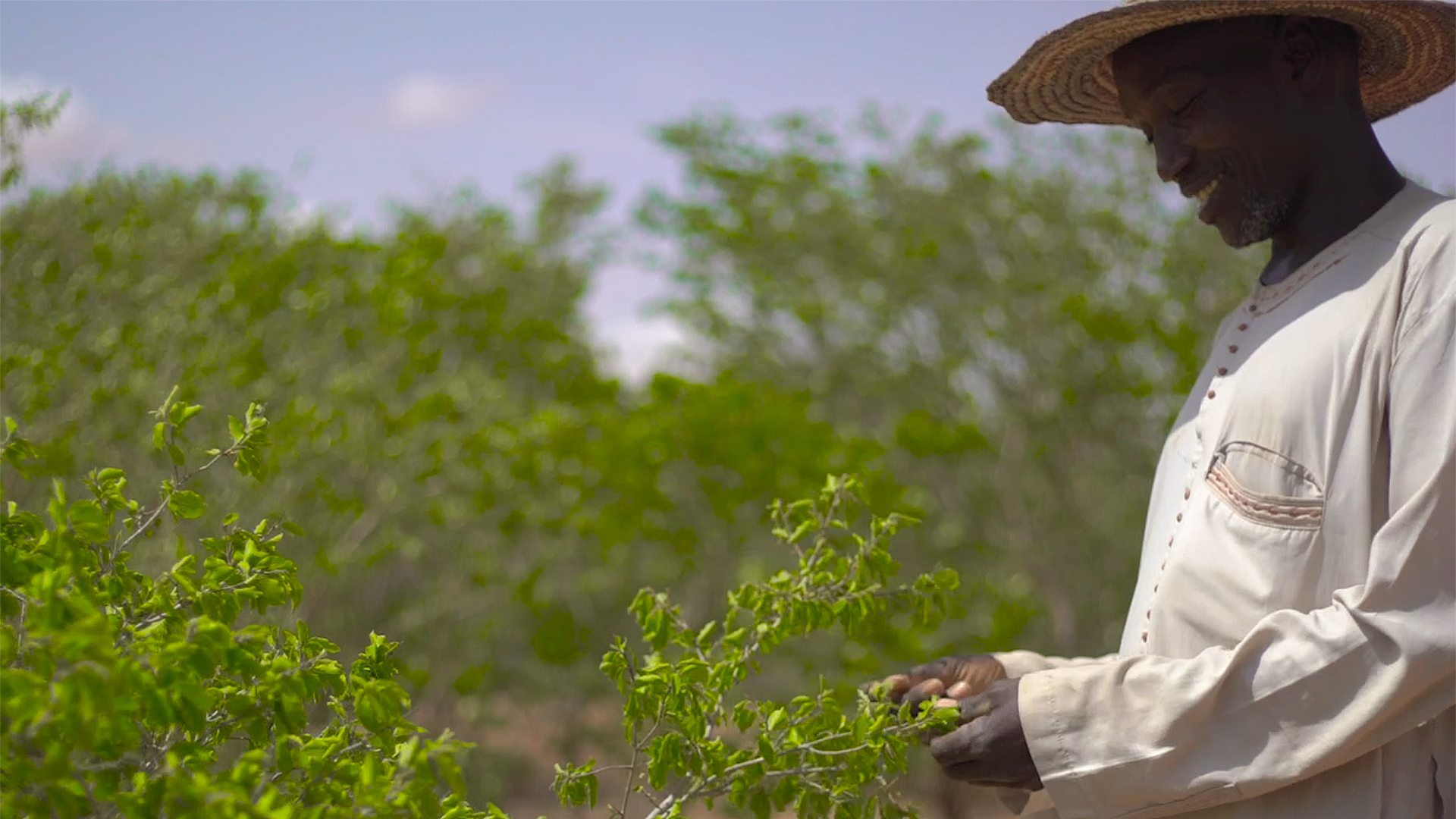A wall that restores land and empowers communities in Niger

At 52 years old, through a marriage and the birth of seven children, Dandakoye has witnessed devastating changes to the land around his village of Sakey Kouara Tegui. Situated in the western region of Niger, Dandakoye’s village is nestled in the watershed of the Gorou Tayya plateau in the urban commune of Kollo.
Almost 25 years ago, this area was home to rich forests and grasslands. "This plateau represented the golden age of abundance for our community. Like the other inhabitants of Sakey Kouara Tegui, I used to get edible fruits and leaves, firewood, eggs, timber, gum arabic and wild meat from this site," Dandakoye recalls. At that time, the forest also housed giraffes, antelopes, guinea fowl, monitor lizards, hares, squirrels and an array of diverse birds.
Within a few years, the devastating effects of climate change and unchecked human activity consumed the ecosystems like a bushfire, and Dandakoye and his community members found themselves on degraded land with no vegetation or wildlife. To compound matters, without trees or plants to retain the soil, he saw water and wind erosion further threaten his village.
These changes caused a drastic decline in agricultural and livestock production in his community. Concerned about the situation, he raised the subject at every village and communal meeting, hoping that one day he would find a solution to reverse the trend.
In 2018, the Forest and Landscape Restoration Mechanism of FAO came to his community and chose Dandakoye to head the management committee in recognition of his commitment to finding solutions.
FAO trained him and other members of the committee on techniques to restore the land, making half-moons in the soil to retain rainwater, seeding and planting trees and managing the community use of natural resources.
These activities form part of the larger Great Green Wall initiative, Africa's flagship programme to combat climate change and desertification and address food insecurity and poverty. It seeks to create a mosaic of productive landscapes across North Africa, the Sahel and the Horn of Africa.
Prior to the FAO project and land reclamation work on the site, Dandakoye conducted awareness and information campaigns within his community to show the importance of forest and landscape restoration and its potential benefits.
He then mobilised more than 1 500 members of his community to participate in the FAO Cash for Work seeding and planting activities. The community grew grass fodder on this area and planted trees, such as jujubes, baobabs, palms and gum trees, that yield products for human use and consumption. Under his leadership, a total of 213 hectares were recovered in 77 days, providing farmers with income totalling approximately USD 66 000.
"The men and women of my village are happy to work to restore the plateau because they know all the benefits they will get when everything is back to normal as it was before," explained Dandakoye.
Extraordinary results
As a result of these actions, the landscape is regenerating, and the fauna and flora have returned.
He couldn't believe his eyes when he saw the wildlife coming back. "I never imagined that one day it would have been possible to relive the wonders of the past," said Dandakoye, while admiring the plateau that is green again and abundant with animals, fruit trees and fodder. "I'm able to enjoy it even more than before," he says.
The management committee has recruited a guard to ensure the security of the site and to protect it against illegal cutting of trees and destructive animals rampaging the area. Under the supervision of Dandakoye, the guard visits the restored site every day at dawn and walks around the perimeter.
Sharing the benefits
FAO has also provided training on the permanent maintenance of the restored site, and the mechanism for equitable sharing of the benefits derived from it, which boosts the participation of the community.
The resources from the site are divided into four parts. The first share goes to the town hall of the urban commune of Kollo. The second share is used for the maintenance of the site; the third share is intended for the operation of the management committee and the fourth share is allocated to the community.
The benefits generated by the restored site are equitably distributed among the community members without distinction, and Dandakoye ensures that everything is done in a transparent and fair manner. "This approach has encouraged the participation of all community members in securing and sustaining the site in the same way as their fields or livestock," he said.
Like the other members of his community, Dandakoye earned money from these activities that he used to buy food and clothes for his family and pay for his children’s school supplies and fees. In addition to income, he shares the food produced on this site with others.
Dandakoye wants to secure the site and perpetuate the investments in close collaboration with the local administrative authorities, the customary and religious chiefs of the department and the urban commune of Kollo.
Given the benefits of the restored forest, Dandakoye intends to use all means to maintain and protect it for the benefit of present and future generations.
FAO continues to work with communities across Niger and the Great Green Wall area, home to over 230 million people, to restore degraded lands and provide income for local communities. To meet the goals of the Great Green Wall Initiative, 10 million hectares per year need to be restored by 2030. With the involvement of local communities and investment from both public and private sectors, this can be achieved.
